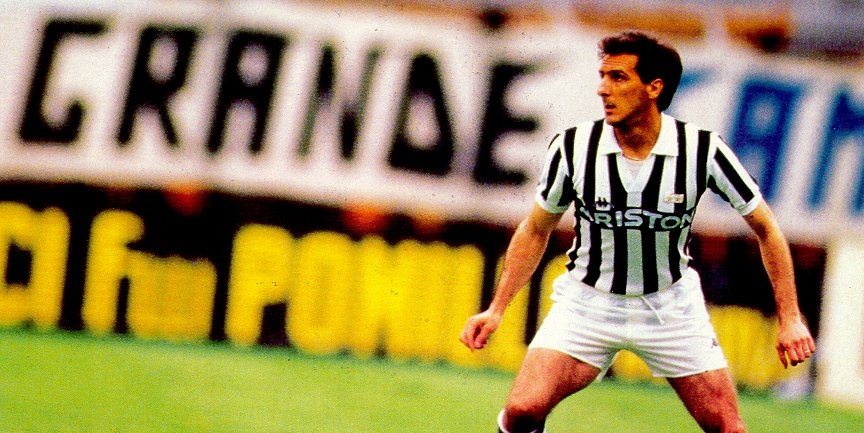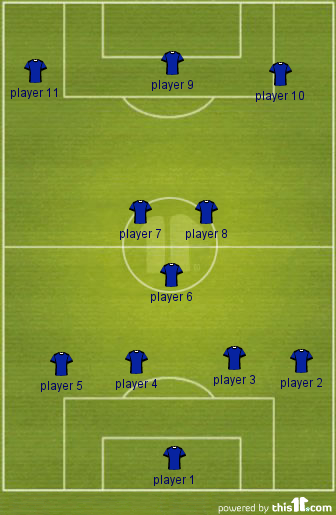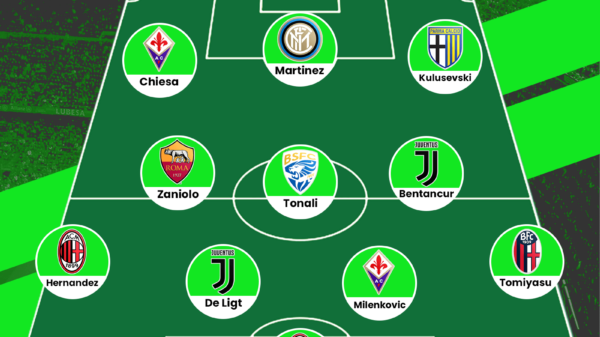A sweeper is a kind of withdrawn center back, playing slightly behind the center backs/defensive line. Also known as a ‘libero’, the mastery of this position is widely credited to the Italians, led by the legendary Gaetano Scirea in the 60’s and 70’s. Franz Beckenbauer is also widely considered by many as one of the greatest proponents of this position, along with others like Franco Baresi, Mathias Sammer and Lothar Mathauss. The sweeper is essentially what we now know as a ‘spare man’ in defence. His job involves a lot of game knowledge, tactical awareness, technical skill and anticipation. His ability to read the game and direct the rest of his defence is vital to his effectiveness. Apart from performing tactical functions, he’s expected to sweep up through balls, win tackles if the situation arises, and play the ball out of defence, or even step up and bring it out himself. The term ‘libero’ (free in Italian) is the best way to describe this player, he is free to roam around in his defensive half, or even the field, but this freedom comes with a great deal of responsibility.
Evolution:
Many credit Franz Beckenbauer and the Italians for the invention of this position; however, it was created by Alexandru Apolzan, a little known Romanian legend who plied his trade just after World War II. The position came into vogue as a response to the Brazilian samba masters, who used a very popular 4-2-4 formation. Helenio Herrera’s Inter Milan team that won 2 successive European Cups in the 60’s very successfully employed it. The sweeper flourished in the ‘catenaccio’ style of play that the Italian teams of the age thrived on. As a response to the success the Italian teams achieved with these tactics, a lot of teams also adopted them, most famously West Germany, with Franz Beckenbauer leading them to a Euro (1972) and a World Cup (1974). However, teams soon found a way to break the ‘catenaccio’ and its success began to wane. Cruyff and his Total Football brigade especially undermined the tactic’s effectiveness. It was in this period that the sweeper underwent a transformation as the Italians came up with their ‘Zona Mista’ system, a predecessor to modern zonal marking in open play. The sweeper once again played a crucial role in this system as marking was added to his list of duties. The sweeper maintained his pre-eminent position in football until the late 90’s, which is evidenced by the fact that the sweeper Mathias Sammer was not only one of the players of Euro 96, but also scored a number of goals from open play. By this time the sweeper was being looked at as more of a deep lying playmaker with more attacking duties as well, and along with the development of the offside trap, and it’s increased use, many managers shifted the sweeper from behind the defence, to in front of the defence. The defensive midfielder is expected to do all the duties of the erstwhile sweeper, from in front of the defence.
In the new millennium, we’ve seen teams go from playing 2 strikers, to playing only 1, with formations like 4-5-1 and 4-2-3-1 becoming the rule, rather than the exception. In such cases, playing 3 at the back allows the opposing attacking midfielders more time and space, and is a waste of players who could be otherwise asked to mark players. Hence, one center back is charged with marking duties, and the other is given a relatively free role, what we commonly know as the ball playing center back (Rio Ferdinand, David Luiz, Daniel Agger, Lucio etc.).
Another modern twist to the sweeper can be attributed to Barcelona and the great Josep Guardiola. Starting as a defensive midfielder, the ‘sweeper’, whose role is commonly played by Sergio Busquets, drops into the space in between the 2 centre backs, who move wide, allowing the wing backs to bomb forward and offer the team options out wide and in the middle. This feature of the defensive midfielders game is crucial to retaining possession as it effectively creates a 4 vs 2 situation at the back, aiding in ball retention, and defensively, it is the sweeper/defensive midfielder who covers the center-backs when the opposition is launching a counter attack, and aids the teams transition from attack to defence. Though the role played by Busquets isn’t the same as that played by the likes of Scirea in the 60’s and 70’s, the purpose is very similar.
“Player 6” being the sweeper/defensive midfielder in both diagrams
Modern Applications:
In the modern game, the sweeper is widely considered to be extinct due to the offside trap; however, it can still prove to be a very useful tactic at times when defending becomes a priority. It is still widely used at junior levels due to the lack of cohesion between the defenders, and the resulting inability to play an offside trap effectively. Teams may also use the sweeper as a deep lying playmaker, and an additional line of defence on occasion where the opposition plays with 2 strikers. The sweeper as an attacking tool can be very useful in terms of possession retention, and can be a driving force from deeper areas should he choose to step up and enter the midfield, as evidenced by Mathias Sammer’s performance at Euro 96.
The sweeper in it’s modified form is also a crucial link in the tiki-taka system employed by teams like Barcelona as his intelligent use of space and technique are critical in deciding the success of the tactic in terms of ball retention in deeper areas of the pitch. The sweeper in such a system is also entitled with the responsibilities of picking longer passes as and when the opportunity arises, and linking play in the deeper areas with that higher up the pitch. Joe Allens performance on Sunday evening against Manchester City serves as a prime example of what the defensive midfielder/sweeper can achieve from deeper areas of the pitch as a playmaker.
The sweeper may be considered dead by many, but we must realize that its applications are widespread, and if used innovatively, the sweeper can be a very effective defensive and offensive option.
Picture Credits to:
forzaitalianfootball.com
uefa.com
thehardtackle.com
Graph Credits to
this11.com
- Analysis: Are Chelsea’s pressing issues a concern? - October 5, 2020
- Has Financial Fair Play Been Worth It? - August 27, 2020
- Tactical Philosophy: Frank Lampard - May 20, 2020

































































